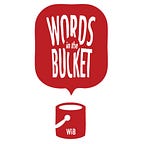The intellectuals of Yemen
Written by Magdalena Mach on 16/09/2017
Art, culture, and civil society are aspects playing a part in the Yemeni conflict that are being overlooked in mainstream media.
Just in June of this year, a new Yemeni media initiative emerged focusing on Yemeni art, culture, and civil society, and their role in building bridges within the country’s violent conflict. In creating a proper Yemeni platform for art, culture, and civil society, the online magazine gives a voice to those marginalized in the conflict, all the while challenging mainstream media’s portrayal of the situation in Yemen.
The ongoing conflict in Yemen figures among a number of violent conflicts that are continuously being underrepresented, if not ignored by Western media. Those who do cover the conflict often give only a very simplified summary of events, granted that the situation in Yemen makes working conditions difficult for media professionals.
However, it has been that while the reasons for this silence of Western media on the conflict are numerous, the long history of Western interference in Yemen, as well as the US currently supporting Saudi and UAE military actions against Houthi rebels, have especially urged Western media to only report about the conflict, if at all, sporadically.
This biased, simplistic, and sporadic coverage by Western mainstream media has been challenged by alternative media all over the world, but also in the West. June 2017, a new Yemeni media initiative, Al Madaniya , made its appearance in Yemen with a revolutionary different take on the conflict by creating a platform for Yemeni art, culture, and civil society .
This media platform intends to give a voice to those marginalized by violent fighting. It is a space for Yemeni artists, intellectuals and writers, and for the civic-minded Yemenis, who dreamed of building a civil state in Yemen and whose hopes were disappointed by the current conflict.
“Most media coverage of Yemen focuses on these violent conflicts, thus exacerbating these [social] divisions. Independent media is a rarity in Yemen, with many media outlets politicized. Journalists have been kidnapped or killed, and numerous media outlets have been shut down. Many intellectuals and journalists are no longer heard in the public sphere.” the Editors of Al Madaniya point out in their statement on the magazine’s launch.
Art as a new hope for Yemen
With this take on the situation in Yemen, the magazine aims to highlight and nurture Yemeni art, culture, and civil society initiatives through contributions preferably from Yemeni writers, photographers and creatives.
This new media focus — a first for Yemen — is aimed to impact the way Yemenis view their own society by providing a space for its cultural, intellectual, and artistic productions, and by highlighting initiatives bridging social divisions. All contributions are available both in Arabic and English, which allows the international reader to explore an undiscovered side to Yemen, which differs from images of Yemen created in mainstream media and challenges the Western media discourse on the conflict.
This stance alone puts Al Madaniya in a David and Goliath position, where it challenges an image created within Western media over centuries of Western interference in its situation. In this position, the platform is creating a counter-narrative within media representations. This type of narrative aims to give people a voice who otherwise would not have one; thereby challenging the commonly accepted narrative, and offering a different way of thinking. And this is exactly what this new media platform strives to do, despite the risks of working in this field.
Creative resistance in a violent conflict
While just six years ago, during the 2011 protests, a plethora of journalists, filmmakers, intellectuals and women’s rights activists publicly expressed their hopes and dreams for Yemen’s future by pointing out the potential of a ‘new Yemen’, things have changed over ti me, and these voices have died down amidst the complex conflict situation, where violence is a constant. The hope of many Yemenis to create a ‘civil state’ has disappeared within the ongoing conflict.
“The violence is tearing at the very fabric of Yemeni society: families, neighbourhoods and cities are divided along political, regional, sectarian and social lines,” according to the Al Madaniya editors.
Such a repressive and violent environment is especially dangerous for those who criticize what is recognized by the majority as the ‘truth’, or as what is supposed to be done. However, young Yemeni activists, creatives, and intellectuals have continued to challenge authorities in their everyday lives by claiming and defending spaces where they can express themselves. Young intellectuals and creatives have been finding ways around the repression apparent in Yemen’s violent conflict, in order to build bridges and safe spaces for artistic and political expression.
The intellectuals and artists contributing to the platform cover themes ranging from civil society creation in Yemen and the role of the intellectual, and of the artist in a socio-political conflict, as well as Yemeni political art, and the growing social restrictions weighing down on Yemeni women , who used to live an emancipated life, especially during the socialist era. These perspectives of the Yemeni conflict are approached in order to put reconciliatory initiatives of Yemeni people — young and old — at the forefront and making an impact while building a primary platform for Yemeni art and culture.
Magdalena is a queer feminist currently doing her MA’s in Gender, Violence and Conflict at Sussex University in Brighton, UK. For the past 4 years she was based mainly in Tunisia, where she was working in projects as writer, translator or volunteer, and studying. Her research and work focus has been circling around the themes of discrimination of and state violence against minorities, policing of queer spaces and bodies, and intersectional feminism. In her free time, she experiments with mixing of sounds.
